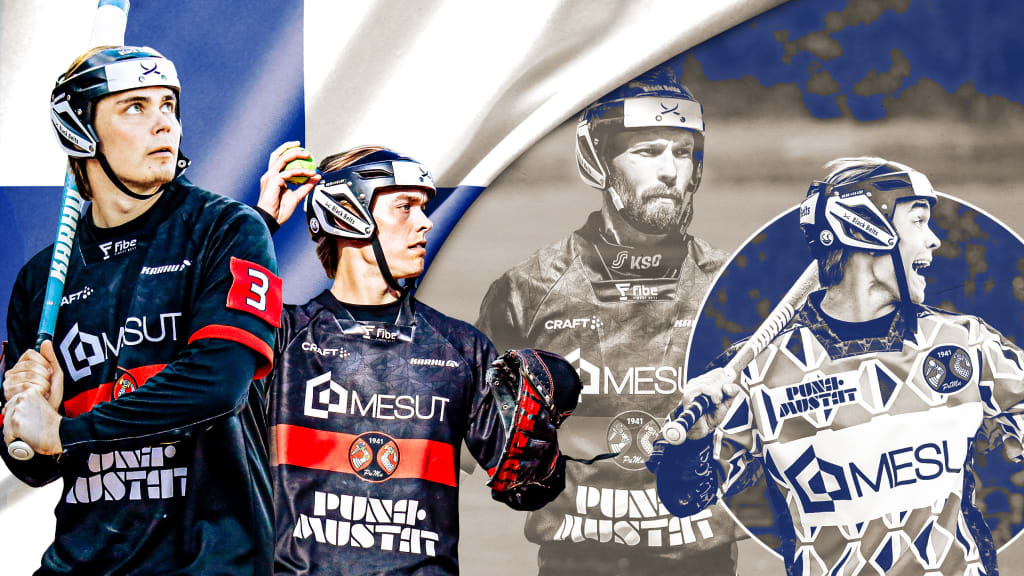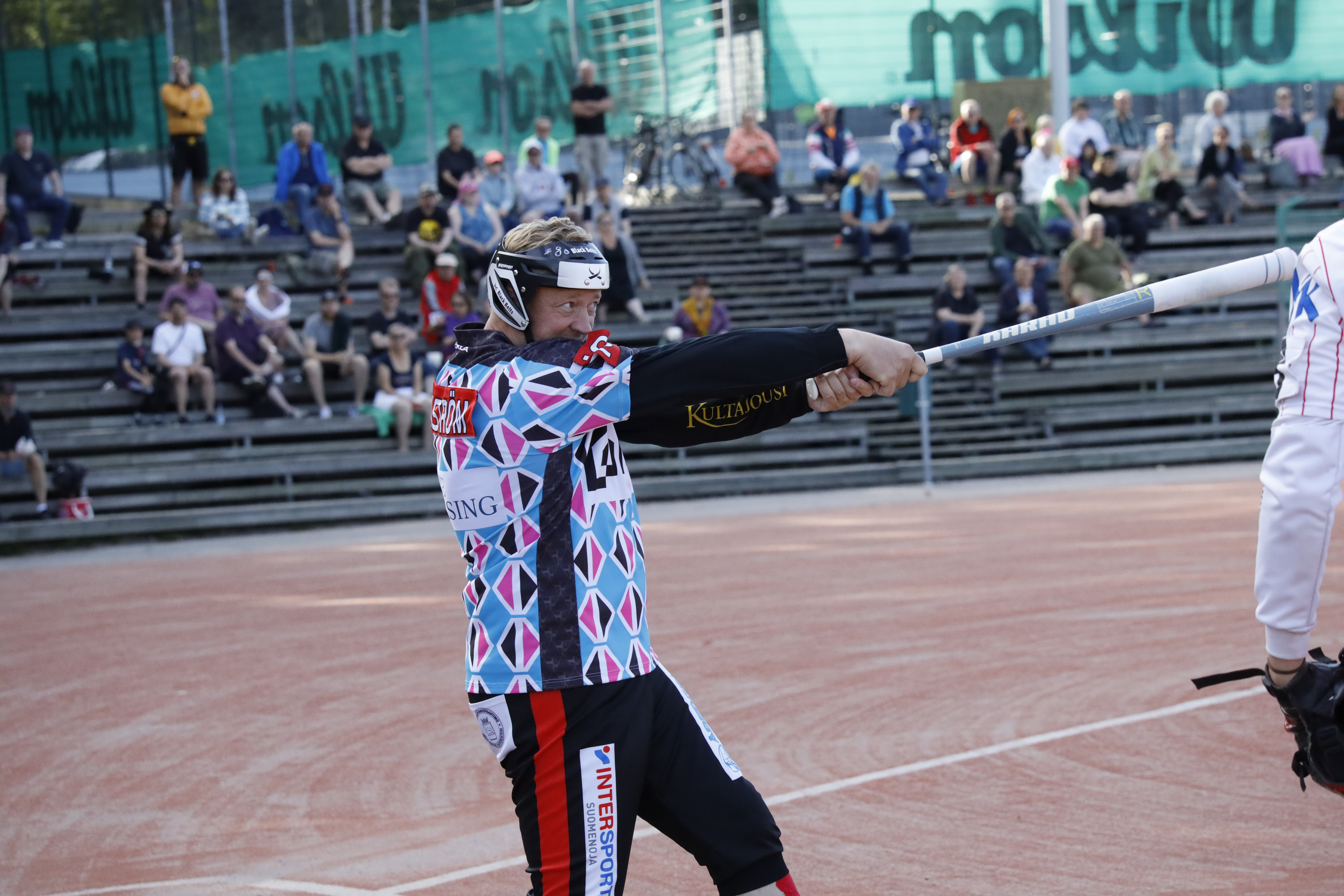
If you've spent any time on social media recently, letting your eyes glaze over as the algorithm spoonfeeds content directly to your frontal cortex, then you have likely seen pesäpallo -- Finland's high-octane version of baseball and the country's national sport. While it has many of the hallmarks of baseball -- there's a bat and a ball, there are fielders (this version has two shortstops), there are innings and three outs -- it is most definitely its own sport.
The game, brought to the country by Lauri "Tahko" Pihkala in the 1920s and combining traditional Finnish bat-and-ball games along with the American-style of baseball, emphasizes athleticism, baserunning and tactical acumen instead of the pitcher vs. hitter matchups that largely dominate Major League Baseball. That, combined with an ingenious river camera set up at Vimpelin Veto's home stadium to show fielders diving into what appears to be the abyss, have helped turn the sport into viral magic. (Click play on the video below. Trust me.)
When asked for his reaction to the uptick in global viewers, who may not have come across the sport before, Juho Juhantalo, chairman of the Puna-Mustat (Translation: Red-Black) club in Helsinki, has a succinct answer:
"It's about time."
On Sunday, the club will host an English-language broadcast of the sport, showing off the game for an audience that probably doesn’t know the difference between an oikea syöttö (strike) or väärä (ball.) The action will start on Sunday, August 4, at 2 p.m. local time in Helsinki or 7 a.m. EST with the game being broadcast on Ruutu+ in Finland and on their YouTube channel around the world. The broadcast comes just two weeks after Sotkamon Jymy -- the most successful team in Finland's top division -- did the same in hopes of reaching a global audience.

The first time a baseball fan encounters pesäpallo -- or pesis -- it can feel disorienting, like you're living inside of a dream. So many of the pieces of baseball are there and yet ... it's very much not.
There are still three bases and home plate, but now you run between them in an almost zig-zag fashion.
There is still a pitcher and a batter, but the pitcher – known as lukkari in Finnish – stands beside the hitter (lyöjä) and tosses the ball straight into the air. Because these pitches are easier to hit, batters look to control where the ball lands more than how hard or far they can hit it.
Each team also has nine players, except they also get three designated hitters known as “jokers” who are inserted into the batting order.
Oh, and if a fielder catches the ball in the air? Yeah, that’s not an out. The goal of the game is to get the ball to the base before a runner reaches rather than converting outs in the air.
For someone who has lived and breathed American baseball, all of that can make your head spin. That’s one of the reasons Juhantalo is so excited for the English-language broadcast. Now, this nascent audience that has come across the game in 30-second chunks on TikTok can see and appreciate the skill and decision-making on which the sport is built.
Juhantalo, who spent most of his career in the Minor Leagues for his hometown club, Kankaanpään Maila, save for one appearance in the Superpesis -- Finland's top pesäpallo league -- suggests you pay attention to two things when watching this weekend:
The multi-colored signal fan, merkkiviuhka, which is used by a coach to share the strategy to the hitter and baserunners. This, as the broadcast will explain, will help you understand the types of hits or “shots” the batter will be aiming for and what the runners will hope to do on the base paths.
The other thing to note is the sheer athleticism of the players on the field. Because the focus in this game is on baserunning and fielding rather than hitting and pitching, every player save for the Jokers is required to be in peak physical condition.
“It's quite a demanding sport in terms of the pace,” Juhantalo said with a smile.
He also made sure to shine the spotlight on three Puna-Mustat stars, who will give you a full sense of the skills on display.
He lists Veli-Matti Sigvart -- "he also played in the top league and is the captain" -- and fielder extraordinaire Aleksi Rantala. "Watch him in the field. He's playing first shortstop and making most of the outs," Juhantalo said.
Then there's Jere Dahlström, who is, "historically, the second-best hitter of all-time. I was able to lure him to our team after last season," Juhantalo noted with a smile. "It's why everyone wants to beat us. We hired one of the best players to the Minor Leagues."
Though he grew up in a small town of about 13,000 people, Juhantalo -- who currently works in technology and gaming for Google -- now lives in Helsinki and dreams of making Finland's biggest city a hub for pesäpallo. He describes his vision for Puna-Mustat -- currently in the second-division -- as "progressive." He sees a thriving youth system, a club that welcomes any and all to the ballpark, and a spot in the Superpesis by 2027 as a crucial part of that goal.
"The broader mission is to bring back the Finnish baseball culture to this city," Juhantalo said, noting that it's been 51 years since a Helsinki team last won the men's title and 48 since a women's team won. "We've thought a lot about it. We've done a lot of marketing. We've attracted new youth players, established new teams, but we want to accelerate it and make it accessible for everyone. The Finnish population in the next 70 years will change. We're not having kids, so we need a huge influx of immigrants. If we don't help them understand what our national game is, the national game will die.”
That means a number of English-language articles on the team’s website in addition to the upcoming broadcast. They’ve also started hosting "Pesis Tuesday," where anyone and everyone can come out and play the game.
"We wanted to find a simple concept, so we invited all ages to play every Tuesday on five courts. We hired coaches, we bought equipment for 1000s of Euros and and it's been great. We've got players between 4 and 64," Juhantalo said. "Inclusion for everyone. We can't get to where we want unless we find everyone who's interested."
That includes women’s pesäpallo players, who, in a recent survey, make up nearly 50 percent of the players at the junior level. The spectators for the biggest women's game can match many attendance marks for the men's games and there's been a sharp increase in viewers of the women's game, as well.
All of this gives Juhantalo, who also spent a season coaching a women's team, a bright view of the future of the sport in Helsinki.
"It's a necessity for us to get to the big cities," Juhantalo said. "That's the mission we're on -- to bring the culture back up to '73 when the men won the last championship and Helsinki was on top of Finnish baseball."
For those who tune in on Sunday, you could be one of the first to get a peek at that future. Watch the game at 2 p.m. local / 7 a.m. EST on Aug. 4 here.
Michael Clair writes for MLB.com. He spends a lot of time thinking about walk-up music and believes stirrup socks are an integral part of every formal outfit.
